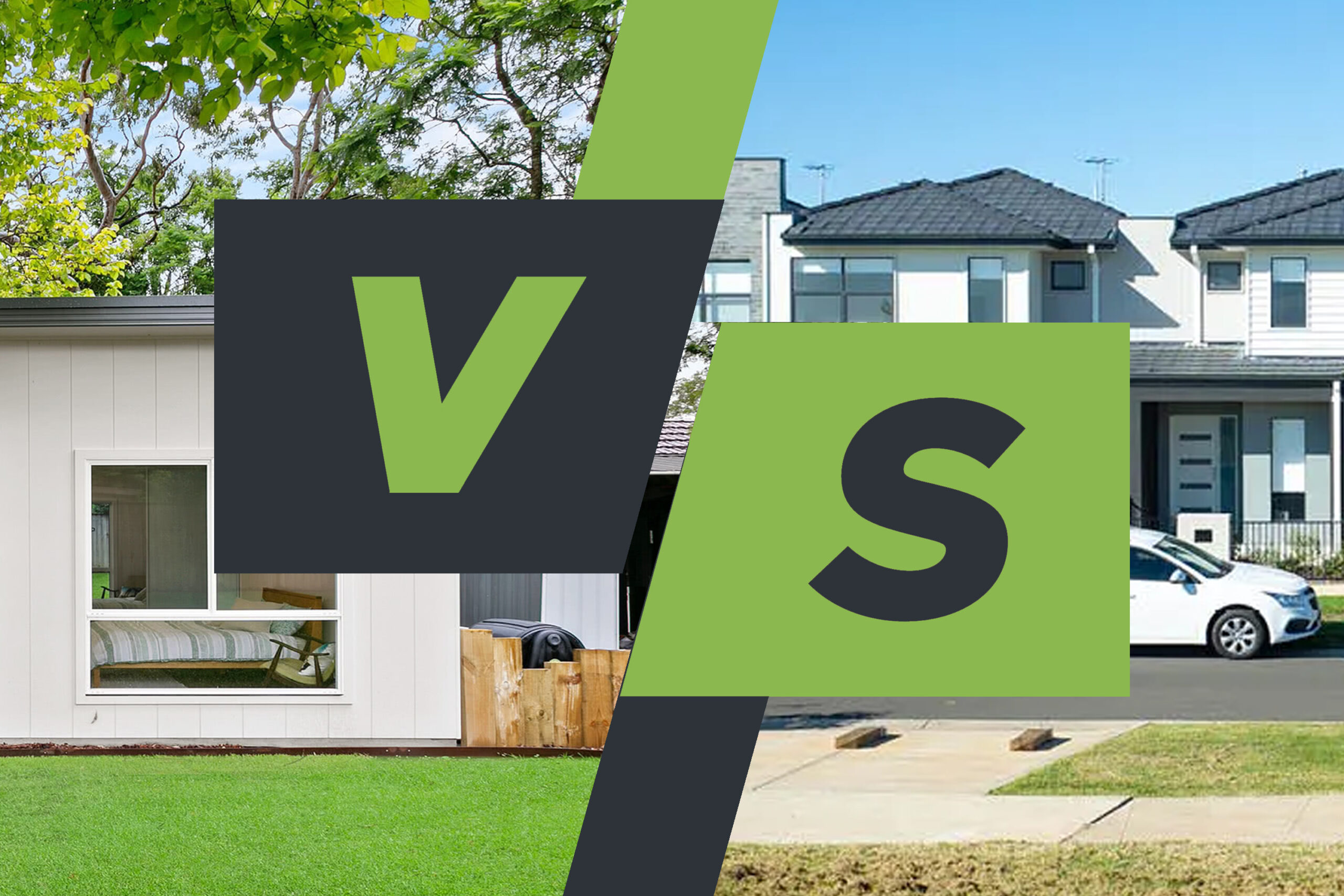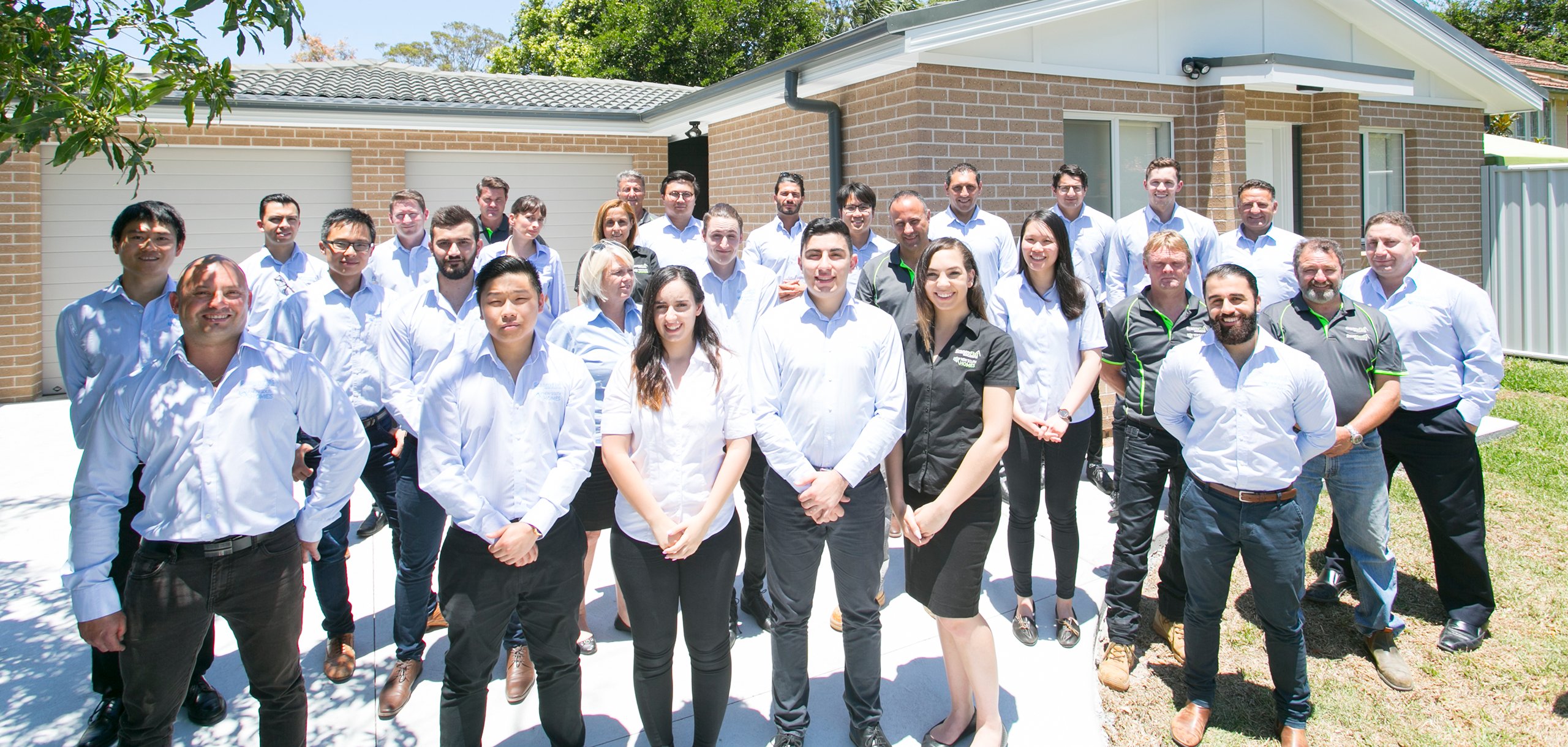



Get in touch
with us today…
Contact us for a private viewing to see a granny flat in your area today!

Employment Opportunities
We are always open to hiring motivated and creative workers who share our same passion to provide high-quality dwellings and attentive customer service.
If you are interested, please submit your details and resume.
Maximising Your Real Estate Investment: A Comparison of Investment Property vs Granny Flat

In Australia, Granny Flats have become a popular investment opportunity in recent years. This is because their relatively low upfront costs and high return on investment (ROI) make them an attractive prospect in a rising housing market. While property investment continues to drive the market, investors are looking towards alternative factors to add value to their property and claim a rental yield without requiring high-interest home loans.
A Granny Flat can add great value to your existing dwelling, both in terms of providing a rental property opportunity and adding to the capital value of the entire property. Anyone with an existing free-standing property may be able to build a Granny Flat, adding to the value of their residence and expanding the property’s living space and number of bedrooms. Plus, it can provide greater value to the overall property for future buyers.
In this post, we will discuss the pros and cons and the differences between Granny Flats and other investment properties, as well as the tax implications, financing options, legal requirements and rental income of both. From the needs of site inspection to financial considerations, the team at Granny Flat Solutions can help you decide the best investment for you and your property.
What is the difference between a Granny Flat & an Investment Property?
A Granny Flat is a smaller dwelling built on an existing property with a larger primary dwelling. Traditionally, Granny Flats have been built as separate places to live for older relatives, allowing them to maintain their autonomy and independence while staying close to family. Nowadays, Granny Flats are everything from a separate home office to a place for teenagers or other family members to live, as freestanding rentals or even as Airbnbs.
One way that Australians, particularly those in the suburbs, are increasing the value of their homes and blocks is by directly investing in their land with a Granny Flat. Both homeowners and renters are looking towards this more affordable alternative to city living or buying or renting larger houses. In NSW, a Granny Flat can be as large as 60m², which makes this type of dwelling highly sought after by tenants who do not need the space afforded by a larger house.
The benefits of Granny Flats cannot be overstated. As the owner, you can closely monitor your Granny Flat investment, as it is part of your primary property. Being a smaller dwelling, maintenance costs are also reduced compared to those required by a full-size investment property.
Granny Flat vs Investment Property: Tax Implications
Both Granny Flats and investment properties will impact your bottom line come tax time. If your Granny Flat is positively geared, you will have to include the rental income in your tax return, though you may be entitled to claim property maintenance. Granny Flats, like other properties, have a minimum depreciation of 2.5%, allowing you to claim wear and tear expenses on your property on your tax return.
If you choose to sell, you may also have to pay capital gains tax on your property as Granny Flats will increase the value by adding an opportunity for rental income separate from the primary dwelling. This will increase the demand for your property for homeowners, occupiers and investors. It is best to discuss with your accountant the financial implications of rental income and how it affects your cash flow, particularly how it affects your cash-on-cash return.
Granny Flat vs Investment Property: Financing Options
A Granny Flat is more likely to be within the budget of Australian property investors compared to a complete investment property. Granny Flats require less capital to invest compared to the upfront costs of a full-sized investment property. On average, it costs between $145k–$200k to build a Granny Flat, while a larger investment property could easily cost three times as much or more, especially when taking into account the recent rise in land prices.
As a Granny Flat will increase the overall value of your property, it may make financial sense to leverage the existing equity of your primary dwelling to buy one. This can be a positive if your existing home loan already has low fixed rates. Speak to your mortgage broker to determine the amount you can borrow and whether you can bundle loans into your existing debt. While this will increase your mortgage in the short term, the returns on the Granny Flat will quickly help pay its own way.
Granny Flat vs Investment Property: Legal Requirements
Like any construction, Granny Flats are subject to permits and approvals before building can begin. However, the NSW State Government streamlined these processes in 2009 through the State Environmental Planning Policy (Affordable Rental Housing). The Housing SEPP permits all residential homeowners with a property greater than 450m² and a minimum of 12m of street frontage to build a Granny Flat. This also means that owners are no longer required to apply for council approval to build a Granny Flat, as long as their existing property complies with site requirements.
The best way to know whether your existing property adheres to the policy requirements is to hire a private auditor to ascertain your property’s suitability and process a Complying Development Certificate. Even if your property does not strictly comply with regulation requirements, you may still be able to build a Granny Flat by lodging a Development Application with your local council.
Granny Flat vs Investment Property: Rental Income
With comparatively low upfront costs, Granny Flats have among the best return for money compared to other kinds of dwellings. From your backyard, you can have an investment vehicle that increases your cash flow, raising your property value and potentially even helping to pay off your existing loan. The average ROI on building a Granny Flat on your property is 20%, which, combined with a relatively low upfront cost, makes a Granny Flat an incredibly attractive prospect for homeowners. This compares to an average 6.8% return on all real estate investments as reported by the Australian Securities Exchange (ASX) in partnership with Russell Investments.
According to the Australian Housing and Urban Research Institute, building a Granny Flat on your property can increase potential rental income by up to 30%. The Granny Flat itself can be rented out to friends, family or strangers and accrue between $300–$700 a week in rent. Considering the average cost of building a Granny Flat in NSW is a mere $145k–$200, a Granny Flat can potentially pay itself off in just a couple of years.
For more information on this please read “The Investor’s Guide to Renting Out a Granny Flat in NSW”
Final Thoughts & Next Steps: Investing in Your Own Granny Flat

For more information, call or book an onsite inspection with the experts at Granny Flat Solutions to see if a Granny Flat is suitable for you and your property. We can work with you from scratch, discuss your personal circumstances, and answer any questions about the laws, rules and regulations, possible design choices, and the best way to meet your objectives and purposes.
Your situation is unique, and our team has the experience to provide you with a wealth of ideas and tips to get the absolute most out of your property. Get in touch with us today.
Also, check more resources on this topic here:
Ready to start your building journey? Chat to our team of experts today and get a FREE personalised quote
Find Out More
“Experience the difference for yourself.”
Call 02 9481 7443 or contact us online now to book your free site inspection and quote.







